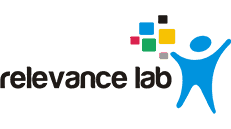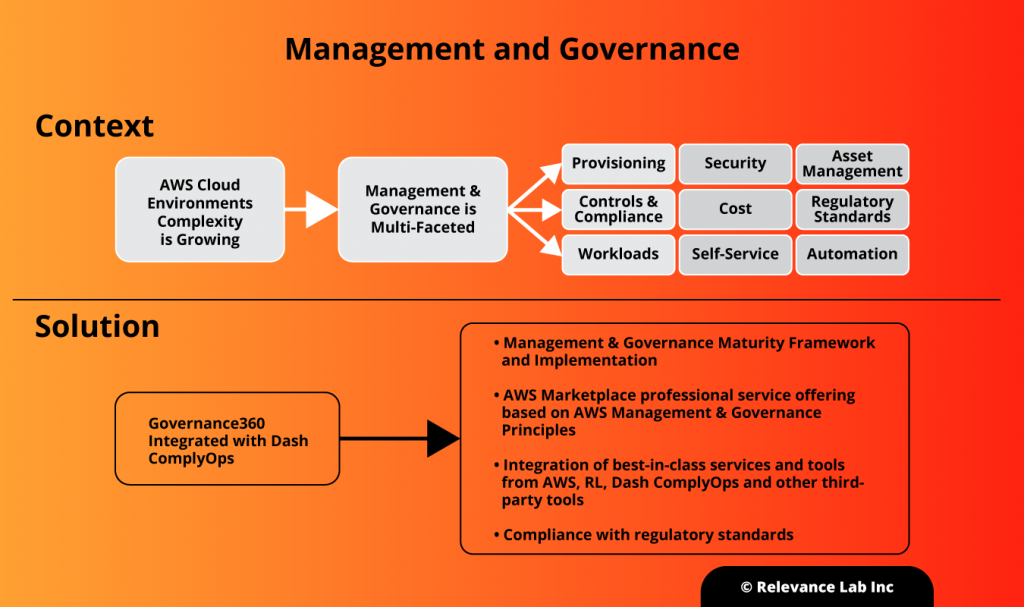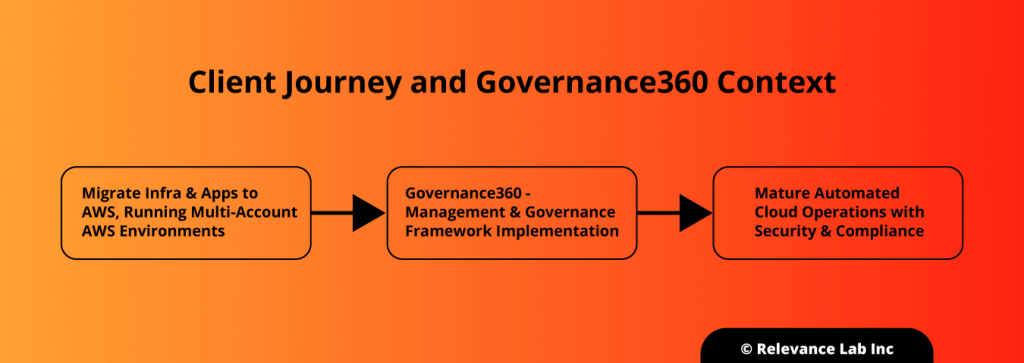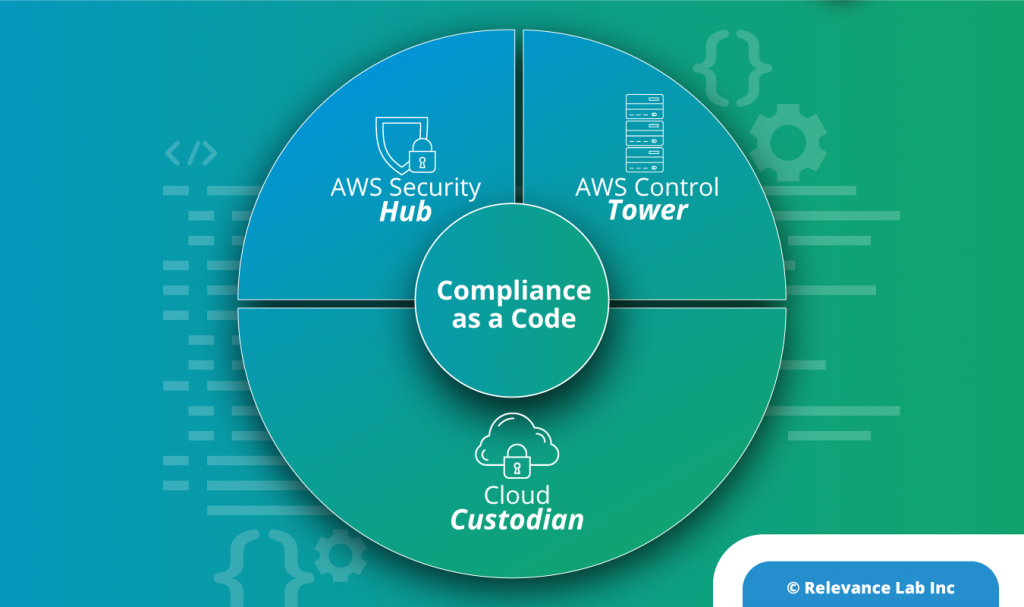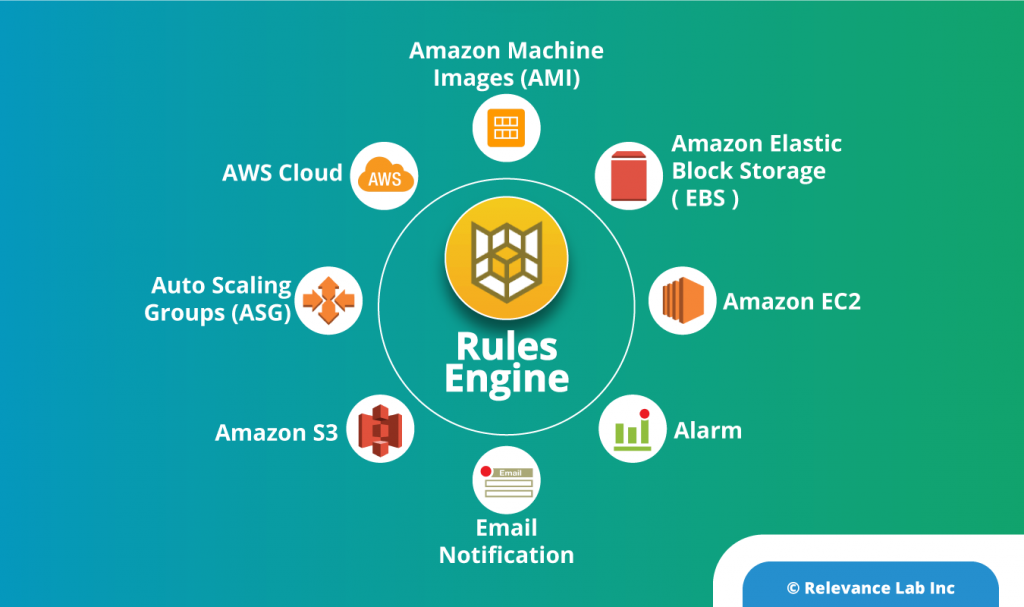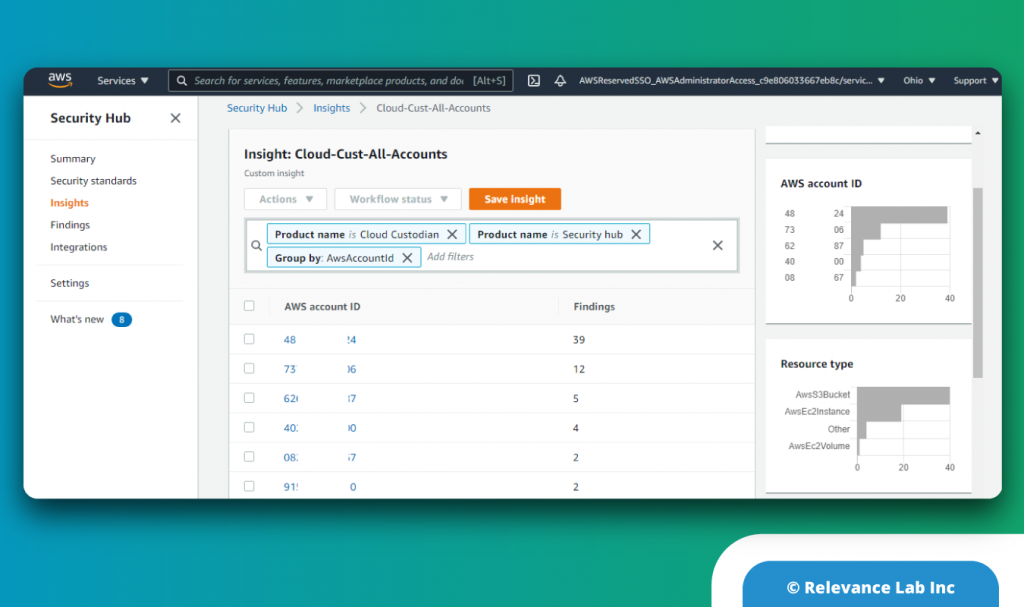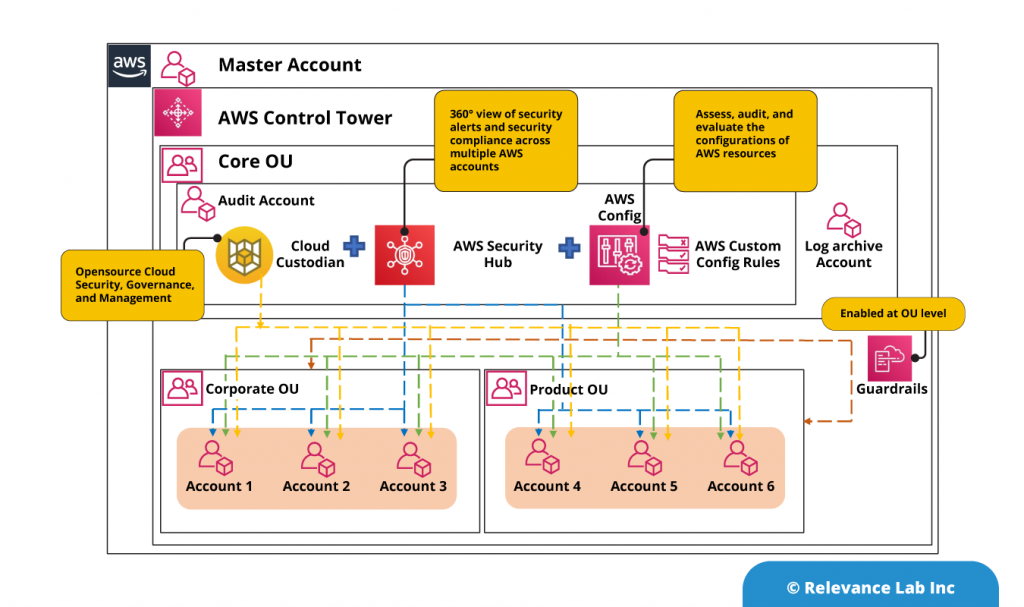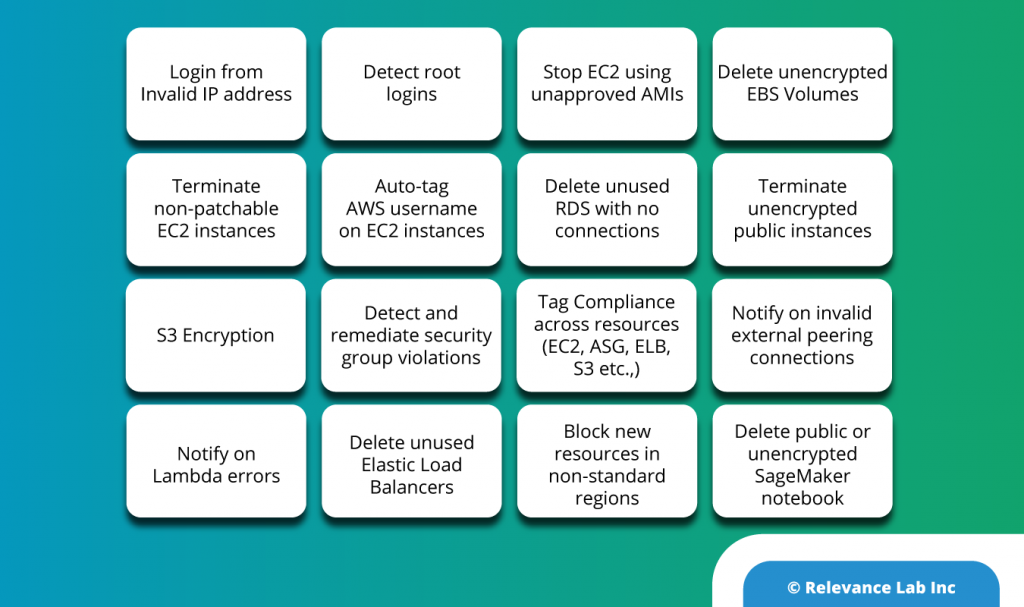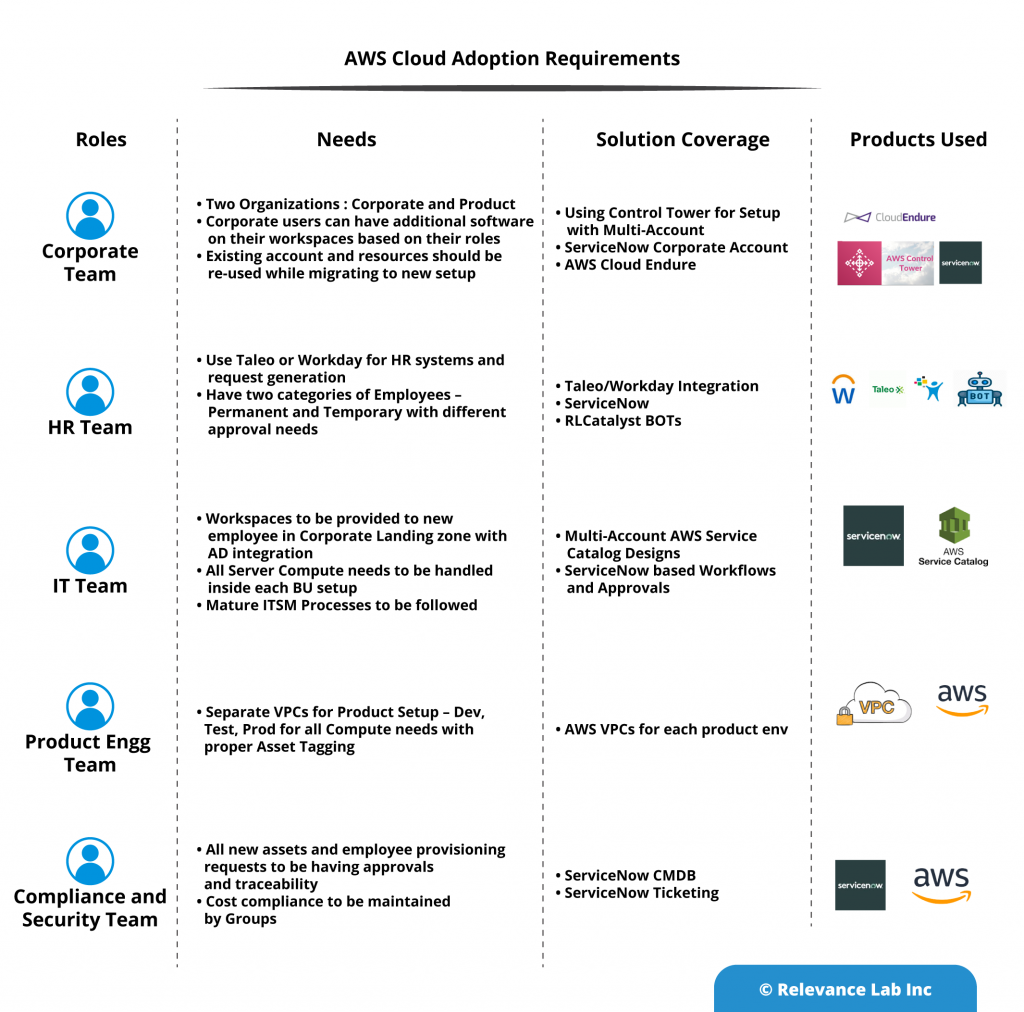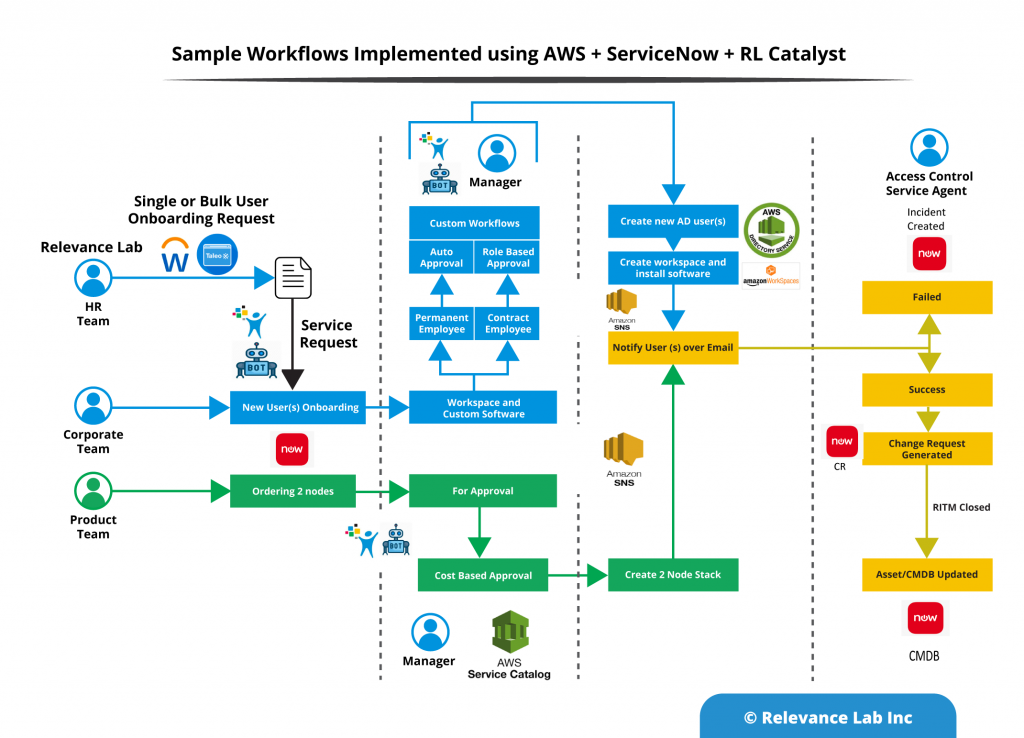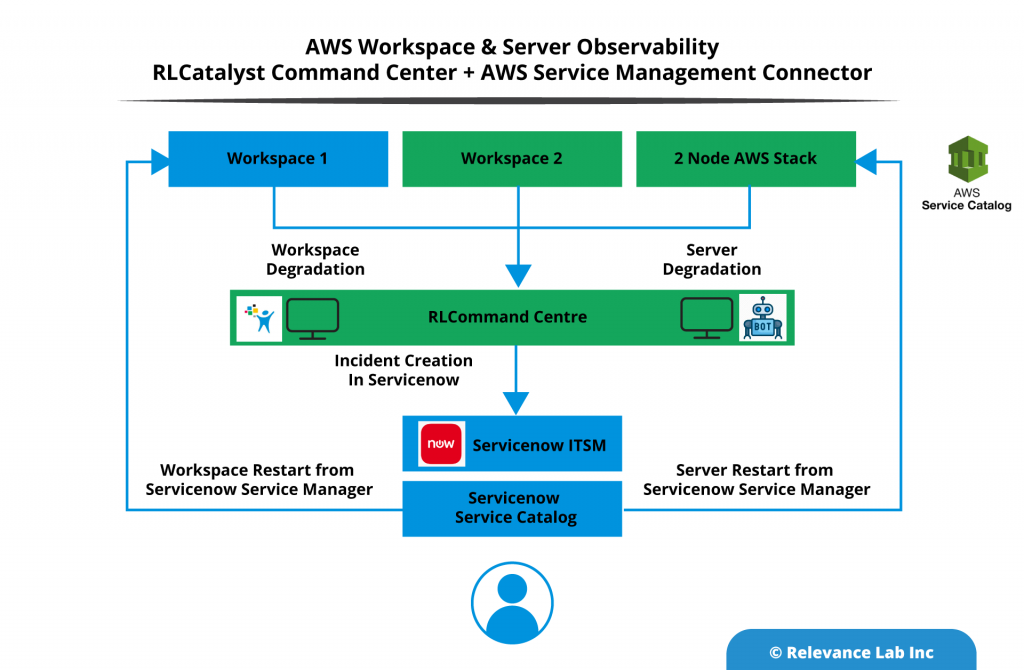2023 Blog, AppInsights Blog, AWS Governance, Blog, Featured, thank you
Governance360 is an integrated and automated solution using the Control Tower Customization methodology. The solution is focussed on the entire lifecycle of a customer cloud adoption covering the following stages:
- Workload planning for Cloud Migration and associated best practices with automation.
- Multi-account management with secure and compliant AWS Accounts, Cost tracking against budgets, guardrails to ensure the workloads are deployed as per AWS Well Architected best practices. This component is called “Control Services” and provides preventive and corrective guardrails.
- The workloads consisting of network, IDAM, compute, data, storage, applications need to be secure and monitored for static and dynamic threats and vulnerabilities covered under Security Management. This ensures proactive detection and correction of security threats.
- Proactive monitoring enables observability across system, application, logs management with integrated alert aggregation, correlation and diagnostics to detection performance and availability issues.
- Service Management and Asset Management integrates the Cloud management workflows with ITSM tools based on enterprise standards and enables self-service portals and active CMDB tracking.
- Foundation of Automation-First approach with workflows, templates and BOTs provides a scalable enterprise grade framework of achieving better, faster, cheaper adoption of Cloud and ongoing cloud managed services leveraging RLCatalyst BOTs Server.
All the above components are complex systems that need integration and data sharing with active policies, status monitoring and workflows for suitable interventions to achieve a holistic Governance360 model. The solution ensures that proper policies and governance models are set up upfront and consistently updated, as life cycle changes are needed. It combines AWS Control Tower and other highly-available, trusted AWS services and Relevance Lab Automated solutions to help customers quickly set up a secure, multi-account AWS environment using AWS best practices. Through customization, this solution can integrate with AWS Control Tower lifecycle events to ensure the resource deployment stays in sync with the landing zone. In a single pane, get visibility on the organizational tree structure of your AWS accounts along with compliance status and non-compliance findings.
The diagram below explains the core building blocks of the Governance360 Solution.
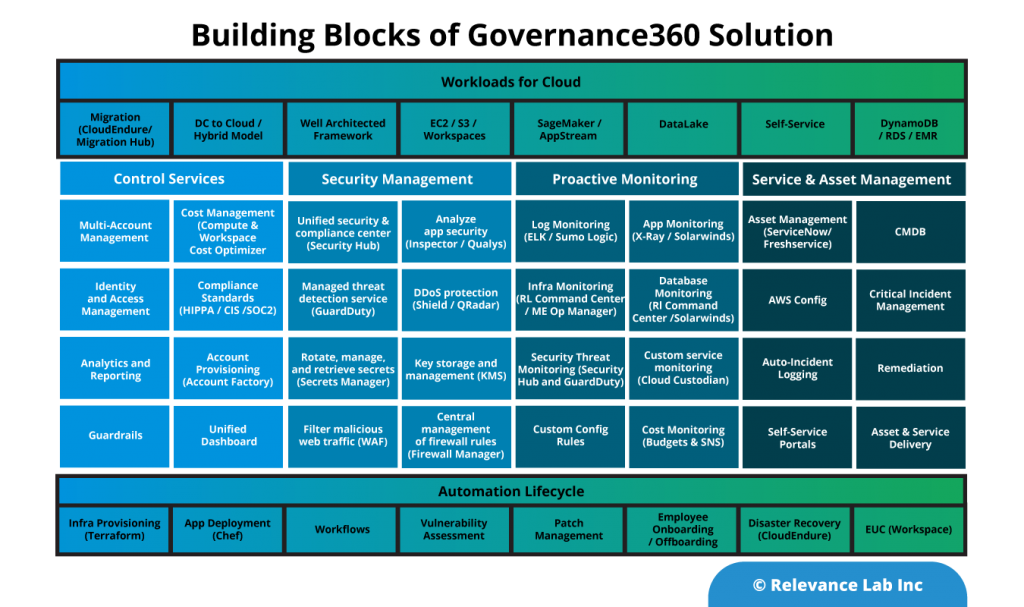
Why do Enterprises need Governance360?
For most Enterprises, the major challenge is around governance and compliance and lack of visibility into their Cloud Infrastructure. They spend enormous time trying to achieve compliance in a silo manner. Enterprises also spend enormous amounts of time and effort on security and compliance. This can be addressed by automating compliance monitoring, increasing visibility across the cloud with the right set of tools and solutions. Our solution addresses the need of Enterprises on the automation of these security & compliance. By a combination of automated preventive, detective, and responsive controls, we help enterprises by enforcing nearly continuous compliance and auto-remediation and there-by increase the overall security and reduce the compliance cost.
Some of the use cases on why Enterprises would adopt Governance360:
- Centralized Cloud Operations Management
- Configuration, Compliance and Audit Management
- Automated proactive monitoring and Observability of your Applications
- Self-Service Provision and Deprovision of Cloud resources
- Cloud Financial Management
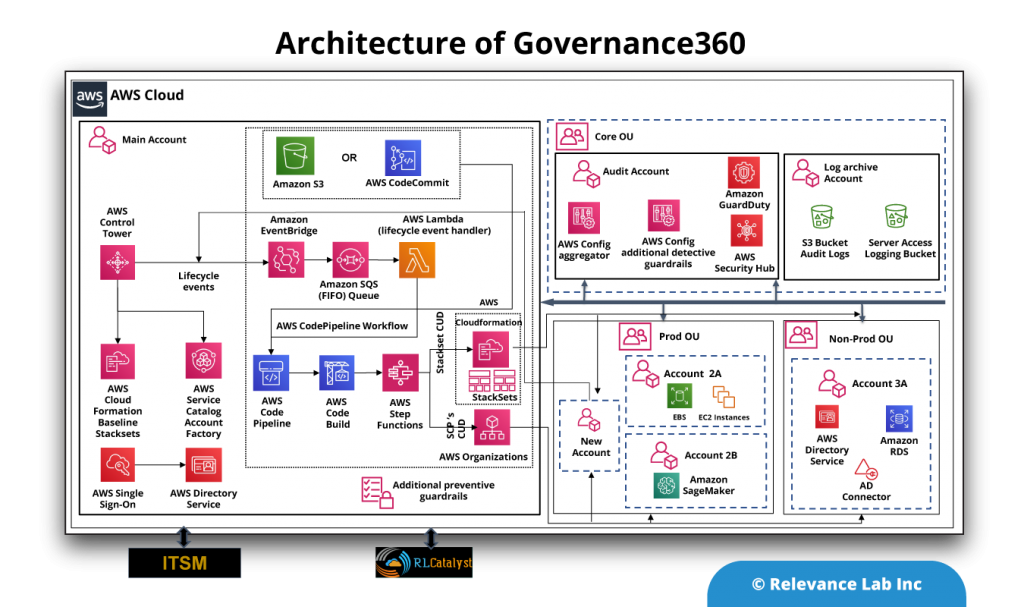
As shown in the above diagram, Governance360 uses a set of tools and policies across multiple layers.
This solution starts with a deployment of AWS Control Tower, post which an AWS CloudFormation template you deploy in the account where AWS Control Tower landing zone is deployed. The template launches an AWS CodePipeline, AWS CodeBuild projects, AWS Step Functions, AWS Lambda functions, an Amazon EventBridge event rule, an AWS Simple Queue Service (Amazon SQS) queue, and an Amazon Simple Storage Service (Amazon S3) bucket which contains a sample configuration package. The solution can also create an AWS CodeCommit repository to contain the sample configuration package, instead of the Amazon S3 bucket.
Once the solution is deployed, the custom resources are packaged and uploaded to the CodePipeline source using Amazon S3, and triggers the service control policies (SCPs) state machine and the AWS CloudFormation StackSets state machine to deploy the SCPs at the organizational units (OUs) level or stack instances at the OU and/or account level. Also, integration with Security Hub ensures all of your accounts and resources are being continuously monitored for Continuous Compliance.
Our standard and the custom library includes a set of pre-built templates (Cloud Formation and Terraform) and policies (YAML/JSON). This could be a combination of CFTs for deployment or provision and policies to enforce, monitor the governance and compliances. This can help automated deployment with one-click for your Network, Infrastructure, and Application Layer and enforce pre-defined compliance on your account.
Governance360 Maturity Model
Governance360 maturity model consists of 4 levels as shown below:
| Level-1 (Basic Governance) |
|---|
| What is AWS Control Tower? |
|
|---|---|
| How does it work? | Step-1
Step-2 Step-3 |
| What benefits does it provide? |
|
| What is still missing in maturity at this Level? |
|
| Level-2 (Advanced Governance) |
|---|
| What is Governance@Scale? |
|
|---|---|
| How does it work? |
|
| What benefits does it provide? |
|
| What is still missing in maturity at this Level? |
|
| Level-3 (Proactive and Preventive Governance) |
|---|
| What is Proactive and Preventive Governance? |
|
|---|---|
| How does it work? |
|
| What benefits does it provide? |
|
| What is still missing in maturity at this Level? |
|
| Level-4 (Intelligent Compliance with Remeditions) |
|---|
| What is Intelligent and Continuous Compliance with Industry Specific Coverage? |
|
|---|---|
| How does it work? |
|
| What benefits does it provide? |
|
How to get started
Relevance Lab is a consulting partner of AWS and helps organizations achieve automation led Cloud Management using Governance360, based on the best practices of AWS. While Enterprises can try and build some of these solutions, it is a time-consuming activity and error-prone and needs a specialist partner. Relevance Lab has helped 10+ Enterprises on this need and has a reusable automated solution and pre-built library to meet the security and compliance needs.
For more details, please feel free to reach out to marketing@relevancelab.com.
References
Reference Architecture for HITRUST on AWS
Customizations for AWS Control Tower
AWS Control Tower and Cloud Custodian
Deploy and Govern at Scale with AWS Control Tower
Relevance Lab solution for Compliance as a Code
